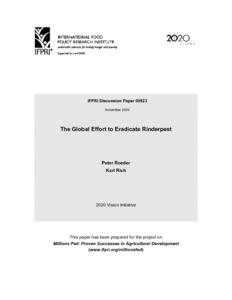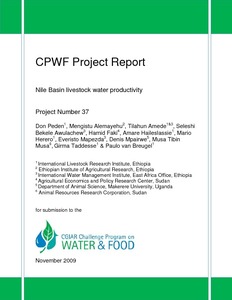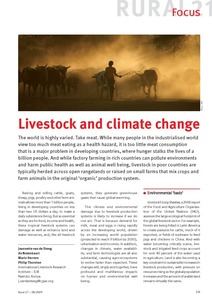CGIAR is the only worldwide partnership addressing agricultural research for development, whose work contributes to the global effort to tackle poverty, hunger and major nutrition imbalances, and environmental degradation.
It is carried out by 15 Centers, that are members of the CGIAR Consortium, in close collaboration with hundreds of partners, including national and regional research institutes, civil society organizations, academia, development organizations and the private sector.
The 15 Research Centers generate and disseminate knowledge, technologies, and policies for agricultural development through the CGIAR Research Programs. The CGIAR Fund provides reliable and predictable multi-year funding to enable research planning over the long term, resource allocation based on agreed priorities, and the timely and predictable disbursement of funds. The multi-donor trust fund finances research carried out by the Centers through the CGIAR Research Programs.
We have almost 10,000 scientists and staff in 96 countries, unparalleled research infrastructure and dynamic networks across the globe. Our collections of genetic resources are the most comprehensive in the world.
What we do
We collaborate with research and development partners to solve development problems. To fulfill our mission we:
- Identify significant global development problems that science can help solve
- Collect and organize knowledge related to these development problems
- Develop research programs to fill the knowledge gaps to solve these development problems
- Catalyze and lead putting research into practice, and policies and institutions into place, to solve these development problems
- Lead monitoring and evaluation, share the lessons we learn and best practices we discover;
- Conserve, evaluate and share genetic diversity
- Strengthen skills and knowledge in agricultural research for development around the world
Making a difference
We act in the interests of the world’s poorest and most vulnerable. Our track record spans four decades of research.
Our research accounted for US$673 million or just over 10 percent of the US$5.1 billion spent on agricultural research for development in 2010. The economic benefits run to billions of dollars. In Asia, the overall benefits of CGIAR research are estimated at US$10.8 billion a year for rice, US$2.5 billion for wheat and US$0.8 billion for maize.
It has often been cited that one dollar invested in CGIAR research results in about nine dollars in increased productivity in developing countries.
Sweeping reforms for the 21st century
Political, financial, technological and environmental changes reverberating around the globe mean that there are many opportunities to rejuvenate the shaky global food system. Developments in agricultural and environmental science, progress in government policies, and advances in our understanding of gender dynamics and nutrition open new avenues for producing more food and for making entrenched hunger and poverty history.
The sweeping reforms that brought in the CGIAR Consortium in 2010 mean we are primed to take advantage of these opportunities. We are eagerly tackling the ever more complex challenges in agricultural development. We are convinced that the science we do can make even more of a difference. To fulfill our goals we aim to secure US$1 billion in annual investments to fund the current CGIAR Research Programs.
CGIAR has embraced a new approach that brings together its strengths around the world and spurs new thinking about agricultural research for development, including innovative ways to pursue scientific work and the funding it requires. CGIAR is bringing donors together for better results and enabling scientists to focus more on the research through which they develop and deliver big ideas for big impact. As a result, CGIAR is more efficient and effective, and better positioned than ever before to meet the development challenges of the 21st century.
We are no longer the ‘Consultative Group on International Agricultural Research’. In 2008 we underwent a major transformation, to reflect this and yet retain our roots we are now known simply as CGIAR.
Members:
Resources
Displaying 9471 - 9475 of 12598The sedentarisation process of the Bahima in Uganda: an emic view
The traditional lifestyle of nomadic pastoralists is vanishing rapidly, because of human population growth which often leads to land scarcity or political pressure on pastoralists to settle. The sedentarisation of the Bahima pastoralists in Western Uganda started in the 1940s and is still going on. In this study former nomadic cattle keepers, who have settled with their families, were interviewed in order to document the decision to settle and the subsequent changes in the lifestyle of these people. All interviewees expressed their satisfaction with their sedentary life.
The Global Effort to Eradicate Rinderpest
During the past 70 years, concerted efforts by the national veterinary services of affected countries from Senegal to China and Russia to South Africa—aided by international organizations—have brought the once-dreaded rinderpest virus to the point of extinction. In the near future, we can expect to see a global declaration of freedom from rinderpest, the first time this has been achieved for a livestock disease. The devastation wrought by rinderpest stimulated the founding of veterinary schools in many countries, and provided the basis for the development of the veterinary profession.
On-farm performance evaluation of indigenous sheep and goats in Alaba, southern Ethiopia
A flock monitoring study on 60 households as undertaken from October 2008 to September 2009 to measure productive and reproductive performances; determine socioeconomic benefits and husbandry practices; and identify production barriers and suggest intervention options in Alaba Special Woreda. The Woreda was stratified on the basis of sheep and goat densities and the respective sites and households were selected using multistage (purposive and random) sampling techniques. Mean land holding per household was 1.5 ha.
Nile Basin livestock water productivity
PN37 (Increasing Water-Use Efficiency for Food Production through Better Livestock Management -
The Nile River Basin) set out to improve food security, reduce poverty and enhance agroecosystem
health by managing livestock for more effective overall use of water. PN37 responded to water
challenges posed by the CPWF, to the Nile Basin Initiative’s goal of better sharing benefits of water
use, and to global need for the livestock sector to use agricultural water more efficiently and
Livestock and climate change
Raising and selling farm animals allows more than 1 billion people to make a daily subsistence living. But as essential as they are for food, income and health, these tropical livestock systems can damage as well as enhance land and water resources, and, like all livestock systems, they generate greenhouse gases that cause global warming. Research is helping poor livestock communities adapt to climate change, find sustainable ways to intensify their production, and, where possible, adopt methods to mitigate livestock-induced climate change.






